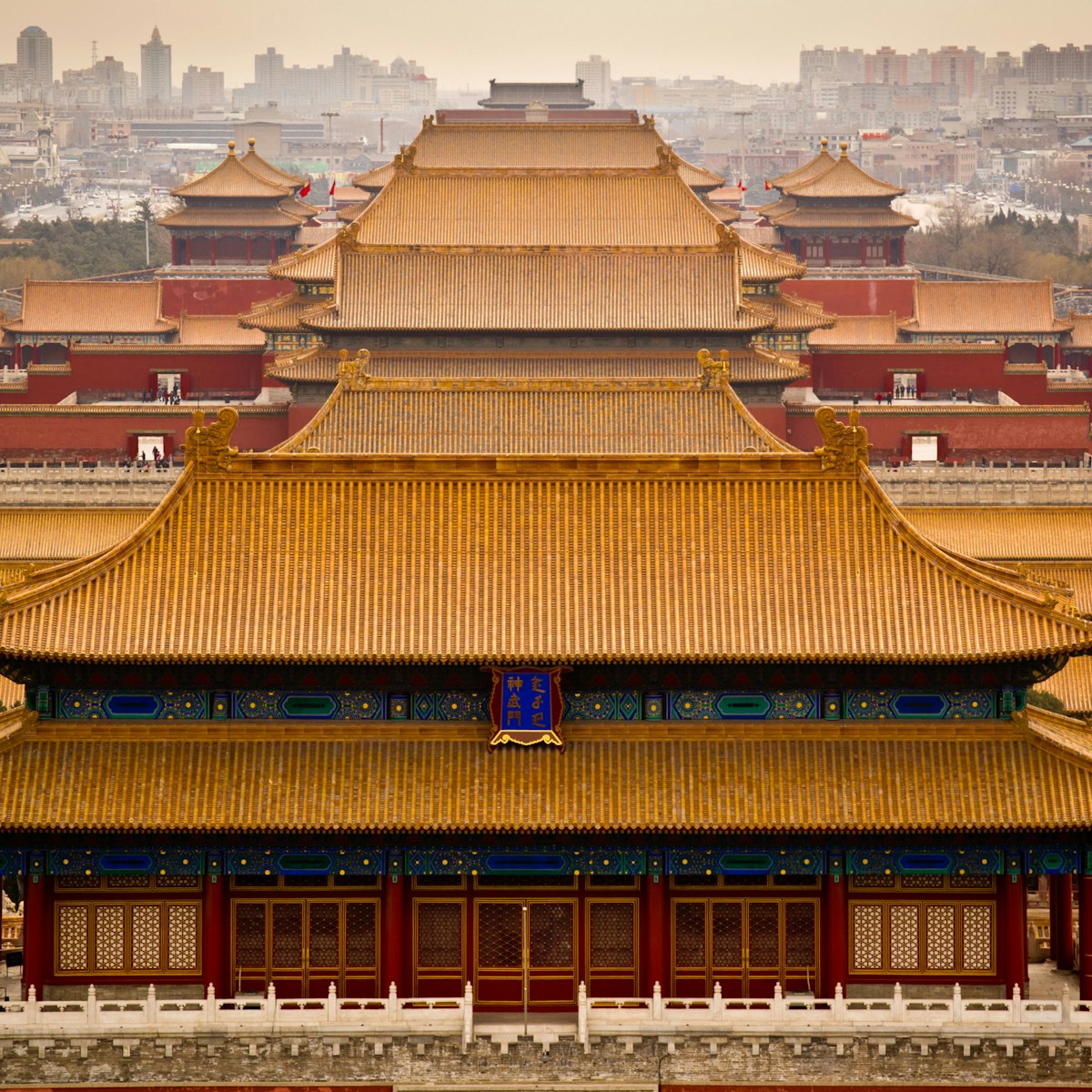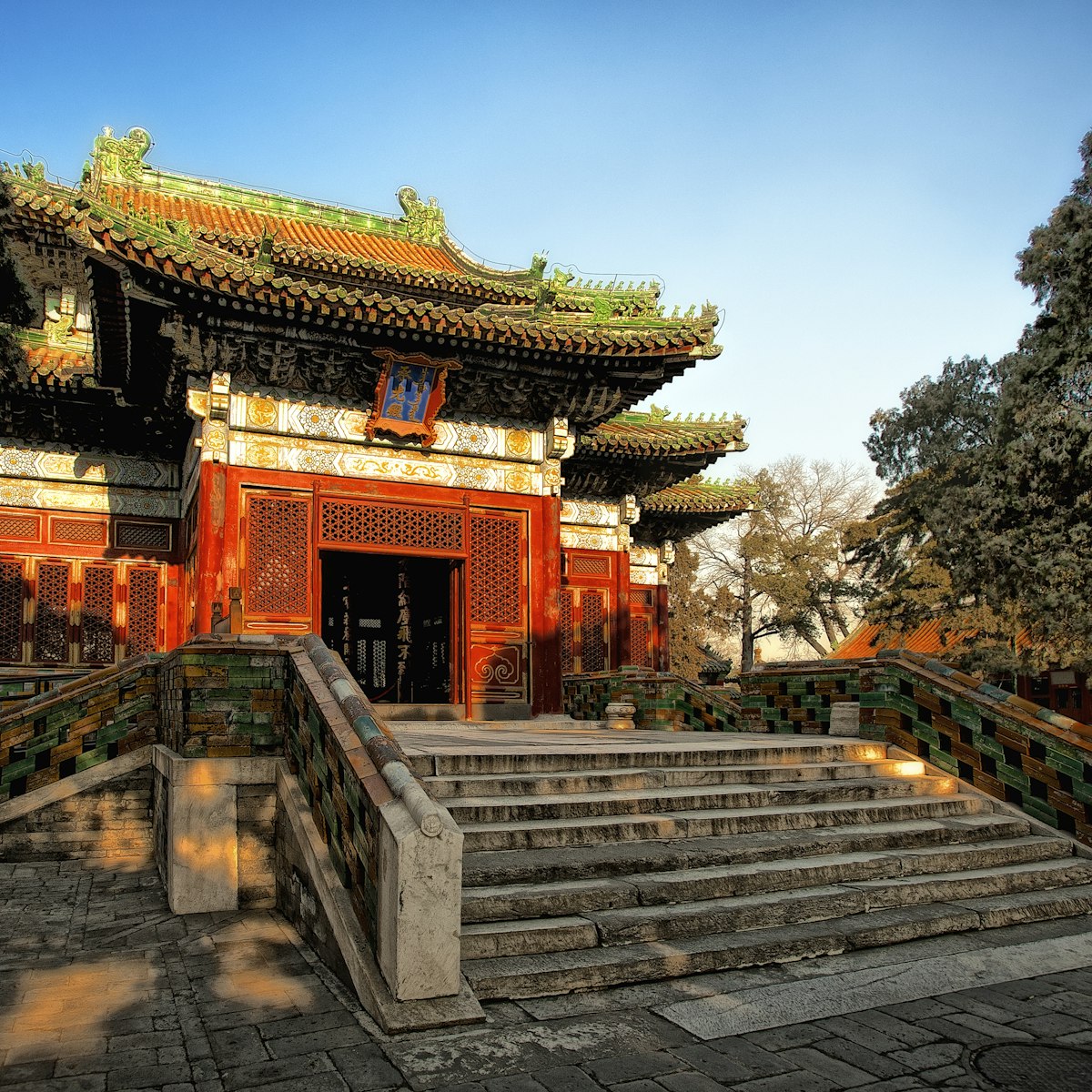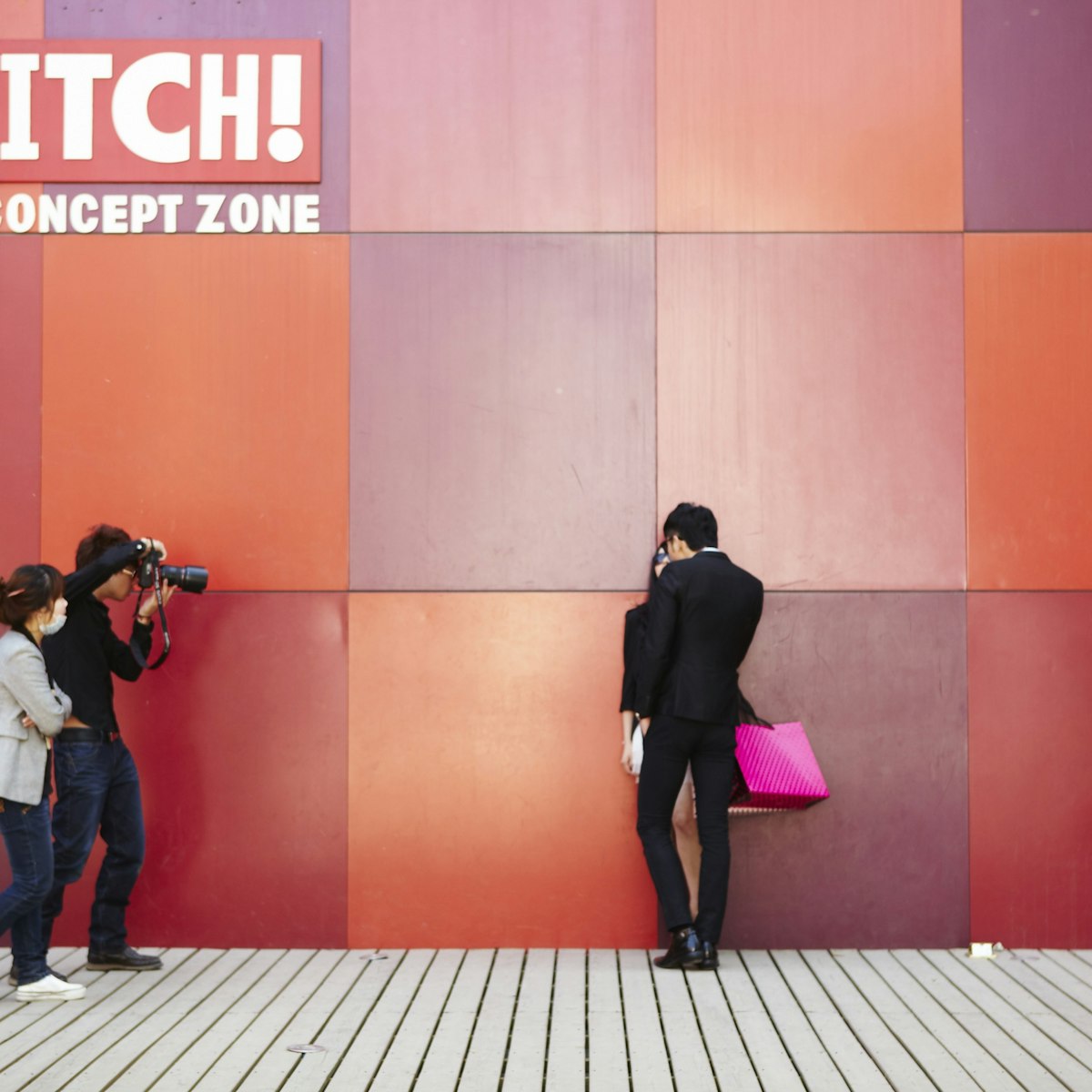This tranquil, little-visited temple was originally consecrated for the storage of Buddhist texts. Its name echoes the Summer Palace’s Longevity Hill (wànshòu means 'longevity') and the imperial entourage would stop here to quaff tea en route to and from the palace. It was undergoing extensive renovation at time of research.
Wanshou Temple was one of dozens that once lined the canal route from the western edge of the Imperial City walls (at Xizhimen) to the Summer Palace. The temple fell into disrepair after the fall of the Qing dynasty in 1912, with the Wanshou Hall burning down. Things went from bad to worse, and during the Cultural Revolution, the temple served as an army barracks.
The highlight of a visit here is the prized collection of bronze Buddhist statuary in the Buddhist Art Exhibition of Ming & Qing Dynasties. The displays guide you through the Buddhist pantheon with statues of Sakyamuni, Manjusri, Amitabha, Guanyin (in bronze and déhuà, or white-glazed porcelain) and exotic tantric pieces. Also look out for the kapala bowl made from a human skull, and dorje and purbhas (Tibetan ritual daggers). Further halls contain museum exhibitions devoted to Ming and Qing porcelain and jade.
Also worth checking out are the Buddhist stone and clay sculptures housed in the large unnamed central hall at the back of the second courtyard. There are four magnificent central pieces, plus a dozen or so arhats (Buddhist disciples) lining the flanks. The pavilion at the rear of the whole complex once housed a 5m-high gold-lacquered brass statue that's now long gone; in its place is a miniature Ming dynasty pagoda alloyed from gold, silver, zinc and lead.
As you exit the temple, see if you can track down the nearby remains of Yanqing Temple and Dragon King Temple further east along the canal. Keep going and you'll get to Wuta Temple in around 20 minutes.







